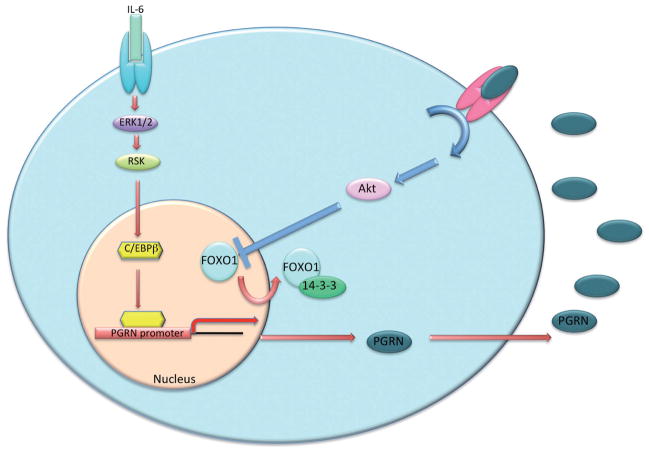Figure 3.
Schematic diagram summarizing the major actions of PGRN in CCA. PGRN expression is upregulated in cholangiocarcinoma via IL-6-driven activation of ERK1/2 and RSK1. These signal transduction events in turn activate C/EBP, which is a predominant transcription factor known to regulate PGRN expression. PGRN is then secreted, where it may act on the surrounding cells (autocrine or paracrine) via an unknown receptor, leading to increased Akt activity and subsequent increased phospho-FOXO1. Phosphorylation of FOXO1 causes nuclear extrusion into the cytoplasm, where it is known to bind the chaperone protein 14-3-3. Cytoplasmic location of FOXO1 inhibits its activity as a transcription activator, thereby changing the expression of certain target genes, which ultimately has growth-promoting properties on the cholangiocarcinoma cells (reprinted with permission from Frampton, et al. Gut, 2012; 61:268–77) (43)

